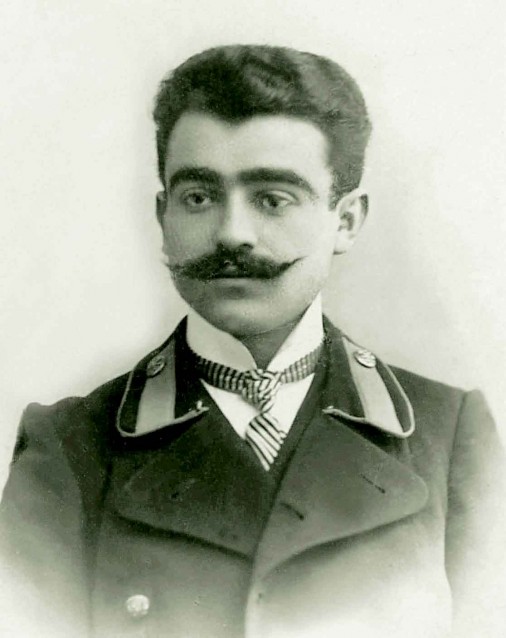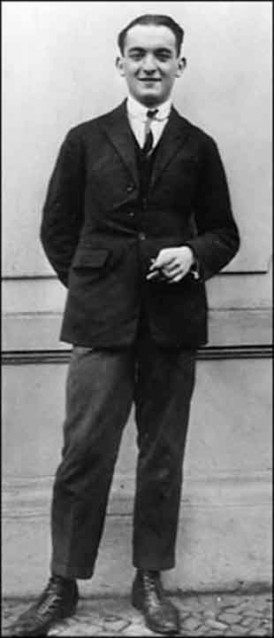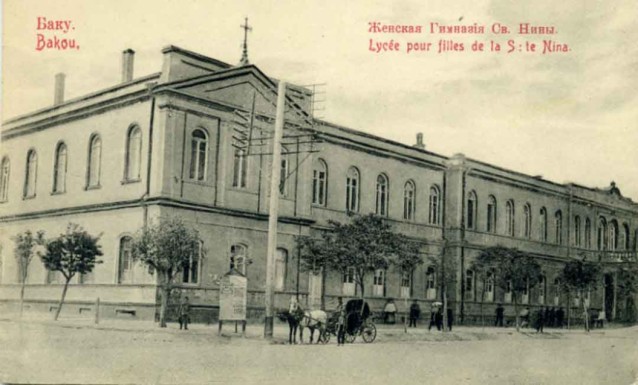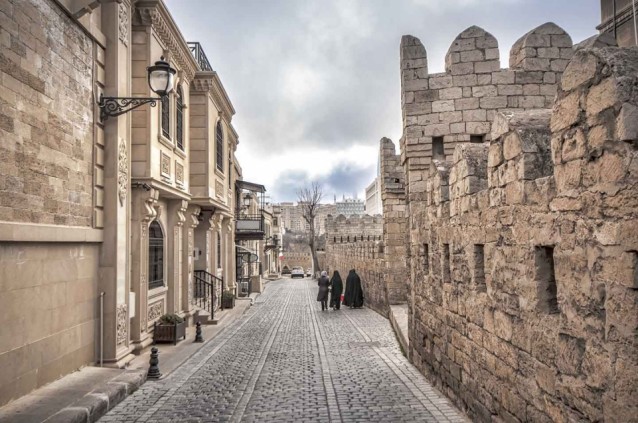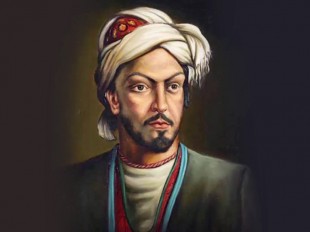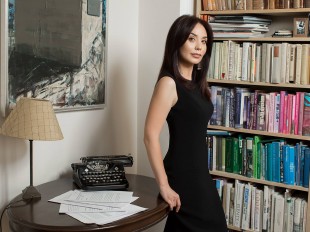The mystical beauty of the ancient city in the heart of modern Baku springs vividly to life on the pages of the celebrated novel, Ali and Nino. This story of star-crossed lovers is the epitome of East meets West in the romantic tale of a Muslim Azerbaijani noble-man, Ali Khan Shirvanshir, and a Georgian Christian princess, Nino Kipiani. Their marriage embodies the cultural and religious diversity of the Caucasus and foreshadows the tension and beauty of modern Azerbaijan.
First published in Vienna in 1937, the book has been praised as an artistic masterpiece. Although it was originally composed in German, the English translation by Jenia Granam reads smoothly and communicates clearly. Interestingly the author, who used Kurban Said as a nom de plume, is almost as enigmatic and intriguing as his work. Much ink has been spilt in as yet inconclusive attempts to establish the true authorship of the novel. If you enjoy a good mystery, I highly recommend you research this topic for yourself. Whoever wrote the story, it is clear that they had a deep love for Baku and an extensive knowledge of the customs and traditions of the area at that time.
The novel was elegantly captured in the 2016 film of the same name written by Christopher Hampton, directed by Asif Kapadia and executive produced by Leyla Aliyeva, which show-cases the gorgeous Azerbaijani countryside and amplifies the raw emotion of the characters. I thoroughly enjoyed the film, although in adapting the novel for the silver screen inevitably some liberties were taken. Peripheral characters are flattened and subtleties are lost. I strongly urge you to read the novel before you watch the film as it gives a wonderful depth to Ali’s internal turmoil and a much more nuanced view of the cultural milieu and political tensions of the era.
Classic love story
The brewing love story crescendos at the cusp of World War I. As European monarchs and rulers align themselves into opposing forces, Ali and Nino find themselves caught in the rapidly changing cultural landscape as a war looming a world away dramatically changes the course of their lives.
From the first page of the novel we see that Ali has a deep nostalgic fondness for the more Eastern ways of his traditional family, but he has also gained a broadened worldview from his Western education at a Russian high school. The novel paints a tender story of young love blossoming between the two of them despite religious and cultural differences.
Upon completing his secondary education Ali declares his intentions to marry Nino, but his plans are impeded by the Tsar’s declaration of war. Nino’s father wants them to wait until the war is over, but Ali is impatient and agitated by the insult of having his proposal declined.
While Ali ponders his next step, his plans are derailed by an Armenian friend, Melik Nachararyan, who betrays Ali by attempting to kidnap Nino for himself. In a brilliant contrast of ancient and modern, Ali mounts his horse and overtakes Melik’s car. Fuelled by rage Ali stabs Melik to death to defend Nino’s honour.
Ali then must flee to Dagestan to escape the Nachararyan family who are out for vengeance. Nino eventually finds him there, and the two share an incredibly emotional reunion which is one of the most passionate scenes in both the book and the film. Ali and Nino are immediately married in a rustic village and share an idyllic if unconventional honeymoon living simply amongst the pastoral villagers. In this uncomplicated world they bask in their love for each other and busy themselves with the simple tasks of hauling water and cooking meals over an open fire. Here, in this unpretentious village in the mountains, their differences melt away and the two of them enjoy a few months of romantic bliss.
Eventually political events interfere in their lives again as Ali’s father comes with news that all the Russians and their sympathizers (including those who want Ali dead) have left Baku. Ali and Nino return to Baku briefly, but the war interrupts their lives once again when the Bolsheviks recapture Baku forcing Ali and Nino to flee to Persia. Nino is miserable and appalled by the Asian culture she is suddenly immersed in. Despite the happy news that she is expecting her first child, she becomes increasingly irritable. Nino is openly dismayed that she is confined to the harem, pestered by eunuchs, and pressured to wear a veil in public.
History from a fresh perspective
Finally, Azerbaijan gains independence and Ali and Nino return to play a prominent role in the new democratic nation. To the casual reader, the momentous importance of this scene may not be fully recognized. As historians have been quick to point out, the film’s official declaration of a new nation on a battlefield is factually inaccurate. However, it does dramatically capture the gravity and grandeur of the event. As the first modern, democratic and Muslim nation Azerbaijan reimagined reality and forged a new identity on the world stage.
With the approaching birth of his first child as well as the birth of a new nation, Ali Khan finally merges his two great loves: family and country. For a brief time he and Nino eagerly serve together in the new regime building a brighter and better future for Azerbaijan. Nino’s European identity that left her so ill equipped to adapt to life in Persia suited her perfectly for serving alongside Ali entertaining European diplomats. Nino even secures a prominent position for Ali at the consulate in Paris, but he refuses the position because he knows he will be as unhappy in Europe as Nino was in Persia.
It’s just that I love this flat roof over my head, the desert and the sea. I love this town, the old wall and the mosques in the little alleys, and I would die away from the Orient, like a fish out of water, Ali says.
Nino concedes, You keep your Asiatic town and I’ll keep my European house. The only happy home for Ali and Nino is Baku where East meets West.
If this were a contemporary story with a happy ending, we would leave Ali and Nino here and tiptoe quietly away as they live “happily ever after.” But, alas, history holds more tragedy than it does comedy and Ali and Nino as a historical novel is destined for sorrow. The ending draws the whole story together in a brilliant and moving final sequence that you should definitely read for yourself.
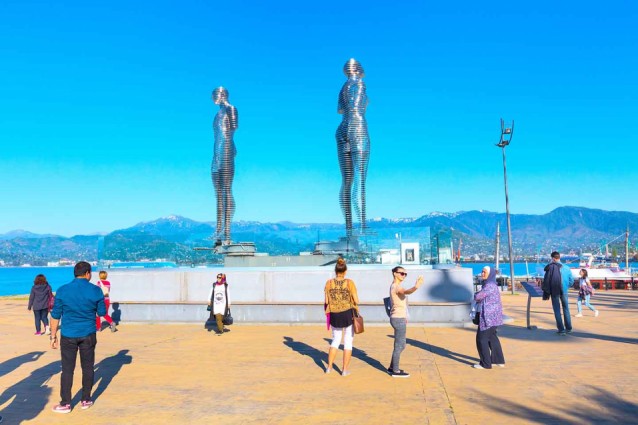 A moving sculpture of Ali and Nino on the Batumi Boulevard, Georgia. Photo: Nataliya Nazarova/Shutterstock.com
A moving sculpture of Ali and Nino on the Batumi Boulevard, Georgia. Photo: Nataliya Nazarova/Shutterstock.com
While the novel presents a robust and intriguing picture of the historical events of 1918-1920, the film is unable to fully develop the historical backdrop. The book offers the reader the gift of a more well rounded picture of the last desperate gasps of a dying republic and the devastation of a hope deferred. Those of us educated in the United States or in Europe have likely been taught a single uniform narrative about World War I and the Bolshevik Revolution. But history is made up of many voices telling their stories from diverse vantage points just as a weaver draws many different strands to weave a rich and beautiful carpet.
Ali and Nino provides the Western reader with the unique opportunity to experience a well known phenomena in history from a completely fresh perspective and to gain a deeper understanding and appreciation for the unique history of Azerbaijan.
As an American tourist, I was enamoured with the way the novel breathes new life into the ruins of the Old City. On almost every page Ali identifies landmarks in Baku that are easily recognized today. Ali describes the inner city as a place of deep family relationships and sacred traditions passed down throughout the generations,
Inside the Old Wall the houses were narrow and curved like oriental daggers. Minarets pierced the mild moon, so different from the oil derricks...Much blood has flowed through the centuries in the alleys of our town. And this blood makes us strong and brave.
Meanwhile the outer city is a modern place built on oil and technological advancement and cultural confluence. I find it intriguing that his observation is still true today. The massive walls of the Old City still stand as a testament to the way of life that existed before the fast money of the oil boom or the dramatic rise and fall of foreign powers.
The Old City remains where the desert meets the sea just as it did in the days of Ali Khan. As you read his story you come to appreciate the beauty of Baku the way Ali does. Visitors who wish to fully experience the richness of touring the Old City should definitely add this book to their reading list.
About the author: Kate O’Donnell has a BA in English Literature, is originally from America and has been living in Baku for the last 10 years.
